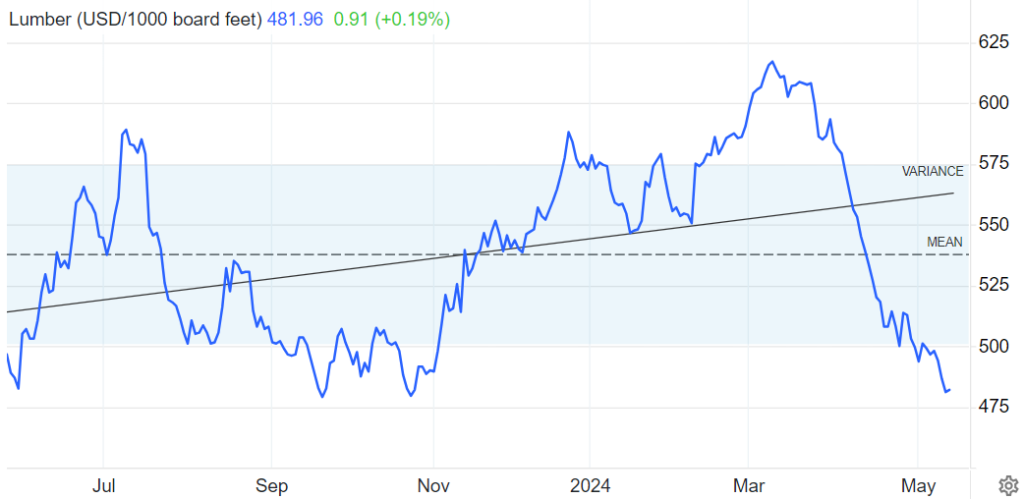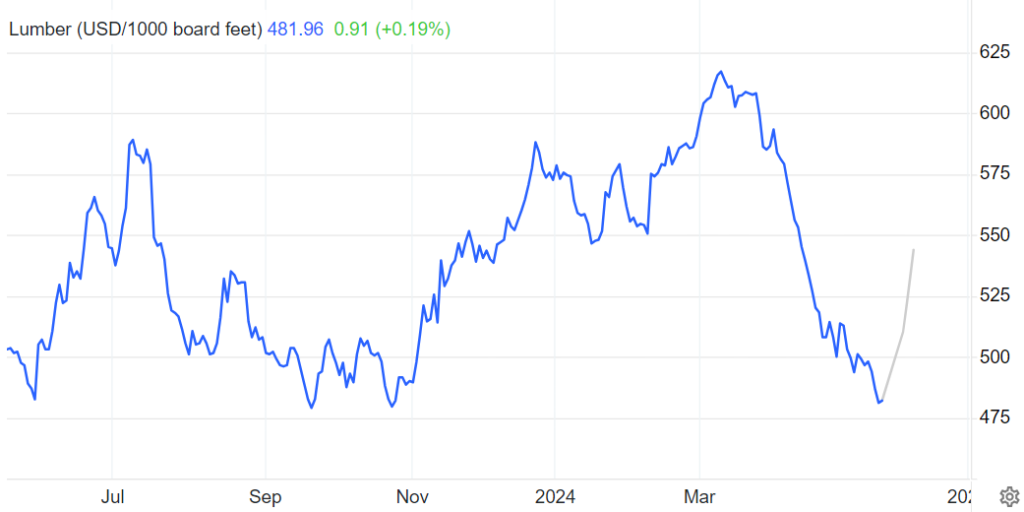Lumber prices have fallen to their lowest since early November last year, dipping below $500 per thousand board feet.
FACTORS
This drop is due to a continued excess of supply over demand. Demand for lumber hasn’t recovered in 2024 after a significant drop in 2023. High interest rates and ongoing inflation are still hampering new housing projects, which primarily drives lumber usage.
Additionally, hopes for a recovery in demand are fading as investors expect interest rates to remain high because of persistent inflation. Reflecting these market pressures, the Federal Reserve decided in May to keep borrowing costs steady for a longer period than previously anticipated.
The ripple effect can be seen immediately with Interfor as an example. Interfor, a forest products company in British Columbia, plans to cut its lumber production by about 175 million board feet from May to September, which is nearly 10% below its usual production, due to these weak market conditions.
TRENDS

Since the start of 2024, lumber prices have dropped by 90.54 USD per 1000 board feet, marking a decrease of 15.81%. This change is tracked through a contract for difference (CFD), which follows the main market index for lumber. Historically, lumber prices peaked at an all-time high of 1711.20 in May 2021. The most recent update to this data and historical chart was on May 15, 2024.
FORECAST

Since the beginning of 2024, lumber prices have dropped by 90.54 USD per 1000 board feet, or 15.81%, as recorded through a contract for difference (CFD) that monitors the standard market for this commodity. According to projections, lumber is expected to be priced at 510.25 USD per 1000 board feet by the end of this quarter. Over the next 12 months, it’s estimated that lumber will trade at 543.87 USD per 1000 board feet, based on global macro models and analysts’ expectations.
